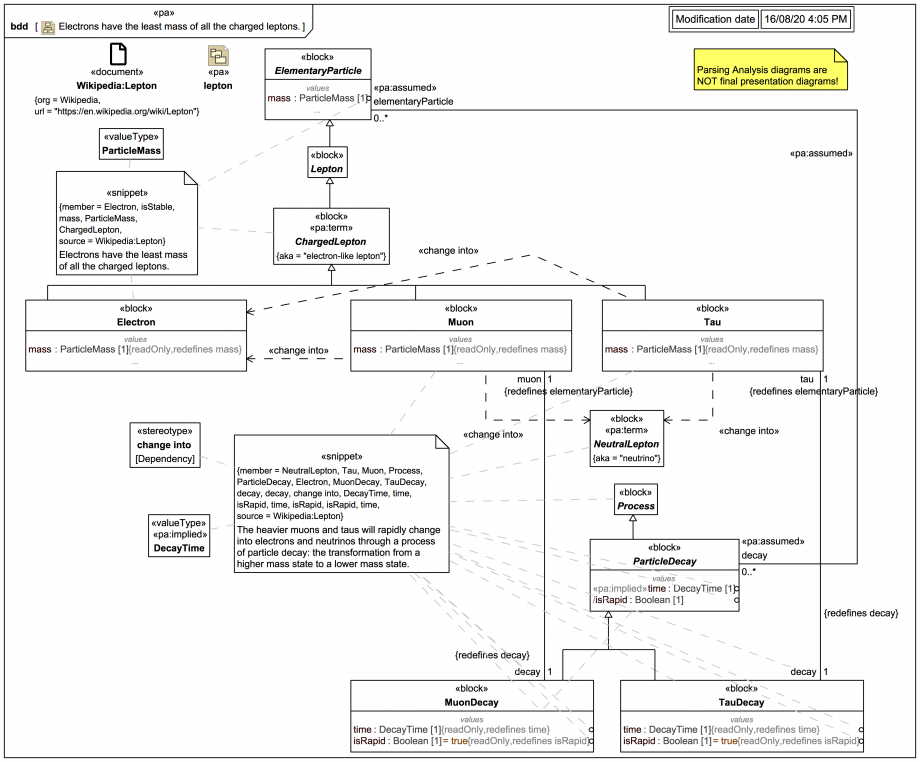Tags and keywords
It seems safe to assume that every ElementaryParticle may have a mass:ParticleMass value property, where the dedicated ValueType ParticleMass enables us to document exactly how such a mass is defined for particles. The specific charged leptons then each have a redefinition of that mass, but we don't have any data yet on what they each might be.
We can safely assume that a ParticleDecay (a Process) is something any ElementaryParticle could be (but not necessarily is) involved in, with MuonDecay and TauDecay being more specific kinds.
We are told that the decay of muons and taus is rapid, but we aren't given a quantitative threshold for this. We can however have a claim isRapid:Boolean that is asserted through redefinition in MuonDecay and TauDecay to be 'true'.
There seems to be some kind of time associated with decays, denoted here time:DecayTime, which could be used to determine whether a decay is judged to be rapid, in which case one could declare /isRapid to be derived.
If you've done any physics, you'll probably know that the muons and taus don't just decay ('change into') into 'electrons and neutrons' - their decay patterns are more specific - but that is all we've been told so far, so that (only) is what is represented. The custom stereotype keyword «change into» has been used on Dependencies from each of Muon and Tau to each of Electron and ChargedElectron (a.k.a. neutrino) - much like an RDF semantic triple in OWL. (It may be that later we wish to upgrade this to be applicable to Associations for decay sequences.)


